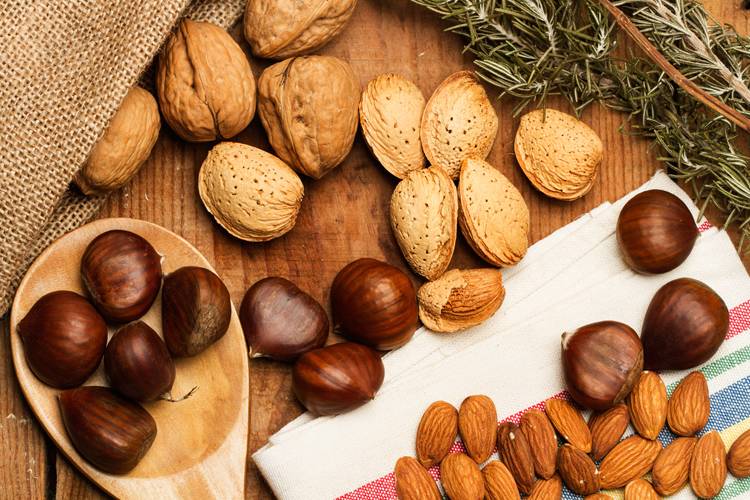7 dried fruits that cannot be absent in your diet
The World Health Organisation (WHO) includes nuts on the list of foods necessary for following a healthy diet. The most significant benefits are that they are beneficial for the heart and that, as part of a balanced diet, they help to reduce cholesterol levels.
TRIED AND TESTED
Share

Nuts are part of the Mediterranean diet. They are rich in antioxidants, minerals, fibre, vitamins and vegetable proteins, known as good fats, or healthy fats, necessary for our bodies. Their calorie content is also recognised, which is why the Spanish Heart Foundation confirms that the appropriate daily quantity is 50 grams.
Adding a handful of nuts into your everyday diet as an extra ingredient in your meals, sauces, salads, breakfasts or desserts will provide us with large doses of nutrients.
THE MOST HEALTHY DRIED FRUITS
- Almonds
These originate from China and are one of the most popular foods in our diet, key in the most traditional desserts. They are especially rich in calcium. You can eat them fresh, toasted or fried, and you can also drink them in the form of almond milk.
- Cashews.
This nut, which originated in Brazil, is rich in B vitamins and magnesium. They are perfect for helping to keep up defences during the coldest months of the year and are recommended for active children and athletes.
- Hazelnuts
These come from a tree that can grow to over 7 metres high and grows in Europe and Asia. It is a nut rich in magnesium and iron. It can be consumed raw or toasted, and is perfect for thickening sauces and giving them more flavour.
- Sunflower seeds
This is one of the best-known nuts and one of the most consumed in this country. They are rich in vitamin and minerals, being one of the foods that are best for the heart. They can be peeled or in their shells, pickled, toasted, or salted
- Pistachios
This green nut that originates in Turkey is one of the tastiest and protein-rich. Along with walnuts, this is one of the nuts that has the highest quantity of fibre and energy. Recent studies show that, in addition, they help to reduce stress.
- Hazelnuts
This is one of the most nutrient-rich nuts, that stands out for being a source of B vitamins and omega 3. According to the nutritionist Halvorsen, hazelnuts are the second plant richest in antioxidants and one of the best for the well-being of the heart.
- Chesnuts
This nut of Celtic origin is characterised by its high content of complex carbohydrates, which keep hunger at bay for longer. They can be eaten raw or roasted and people often eat them during winter and at Christmas.
DID YOU KNOW...
The peanut isn’t really a nut. It is a legume closely related to peas and beans, however, it’s considered to be a nut. It’s rich in protein, vitamin B3, and folic acid and, what’s more, helps with concentration.






